News Students returning from Stockholm's World Water Week share their insights
Mia Jeffries September 19, 2025
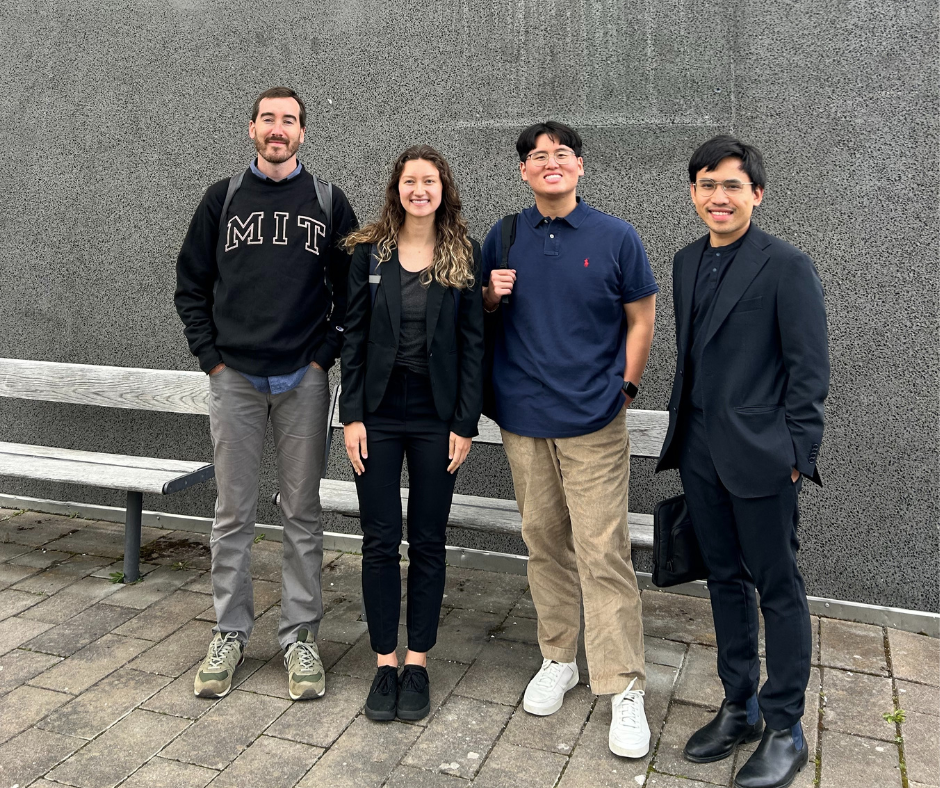
From left to right: Tyler Barron, Grace Smith, Patrick Song, Chotiwat Jantarakasem
J-WAFS travel grants allow MIT graduate students to attend select international water conferences to further their professional development for careers in the water sector. This year, three MIT students received J-WAFS travel grants to attend World Water Week in Stockholm, Sweden. Grace Smith (Department of Mechanical Engineering) works in Svetlana Boriskina's Multifunctional Metamaterials (META) Lab, and her research uses water atmospheric harvesting techniques to address water scarcity in dry regions. Patrick Song (Department of Biological Engineering) is working with Professor Angela Belcher to develop an engineered living material (ELM), utilizing genetically engineered yeast, for low-cost bioremediation and biomining. Tyler Barron (Department of Urban Studies and Planning) is in the master’s in city planning program at MIT to pursue his interests in active mobility, food systems, and urban governance. Chotiwat Jantarakasem, a Hock E. Tan postdoctoral fellow at J-WAFS and the K. Lisa Yang Global Engineering and Research (GEAR) Center, accompanied the students during the conference. Chotiwat works with Amos Winter of the GEAR Center and J-WAFS' Greg Sixt to explore different research opportunities regarding the need for water and food in underserved communities. This year's conference theme was “Water for Climate Action,” focusing on the direct links between climate change and environmental and biodiversity decline.
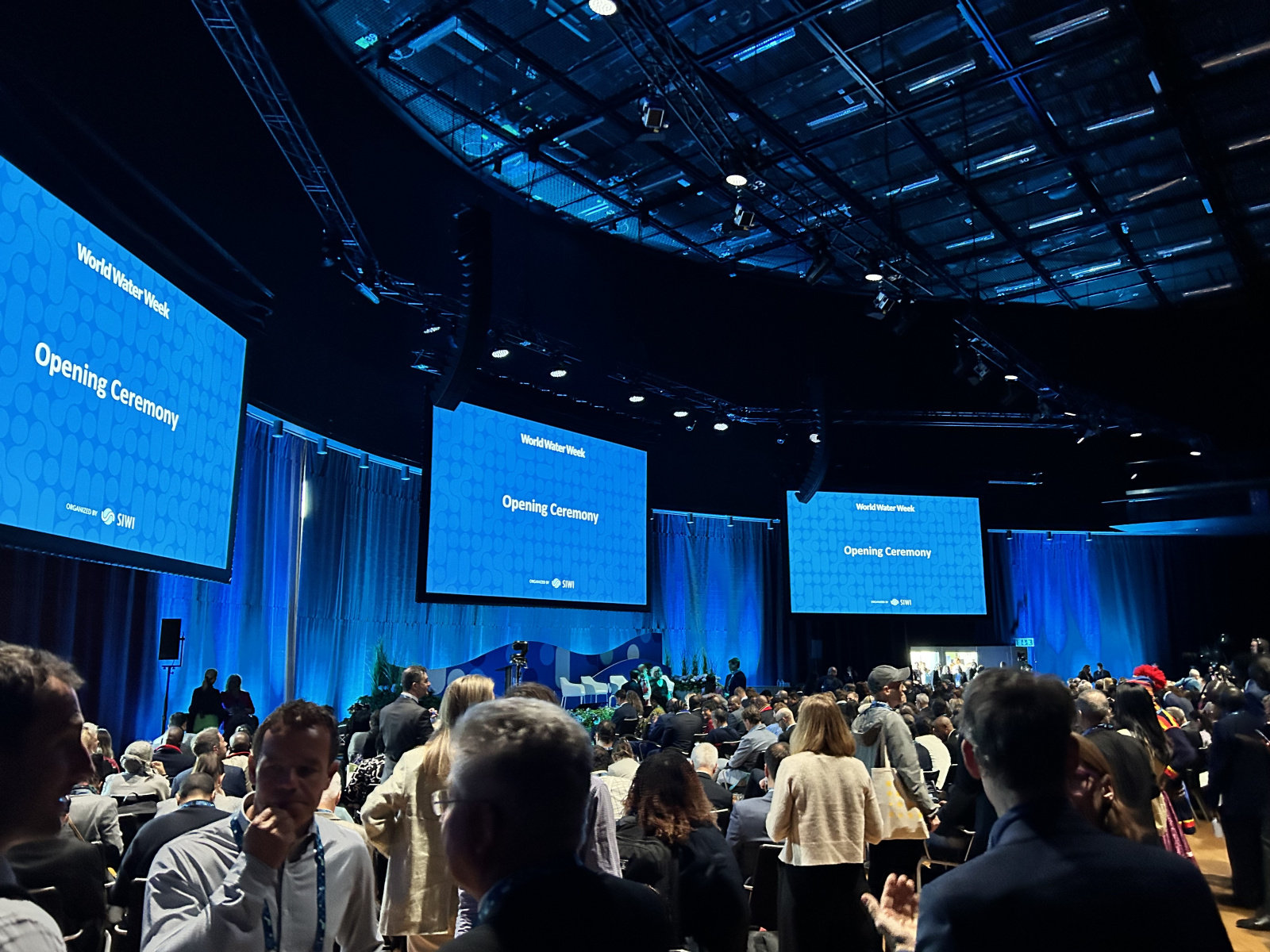
The opening ceremony of the conference
“At Stockholm World Water Week 2025, I gained a deeper understanding of global water issues and had the opportunity to meet people from around the world who are addressing water
scarcity and pollution in innovative ways,” said Grace. She went on to explain how at the opening ceremony, water was described as flowing into three buckets: “too much” (flooding), “too little” (water scarcity), and “too dirty" (pollution). “This simplistic framework was powerful when coupled with images and examples of communities affected in each way,” said Grace. Grace and her peers were able to attend various conferences and workshops all relating to the water sector and climate, allowing them to come away with new perspectives that can be implemented in their future work.
Each day, the students listened to experts in the water industry, including non-profit organizations, governments, and academia. On day four, Patrick and Tyler took part in a talk titled, “Gender Equality and WASH–Mutually Reinforcing Domains of Change.” This seminar explained the intersection of water and gender inequality in certain countries. For example, women in Zimbabwe and Kenya spend up to 30% of their day collecting water, but do not engage in discussion of solutions to problems related to water, sanitation, and hygiene (WASH). In another session attended by Patrick, he noted, “Today gave me a new sense of how economics drive decisions in water, something I don’t usually think about in the lab...I learned how climate change and water challenges could cut global GDP by 10–15% by 2050 due to food and biodiversity instability. That was a wake-up call--water is not just a humanitarian issue anymore, but also an economic one,” he says.
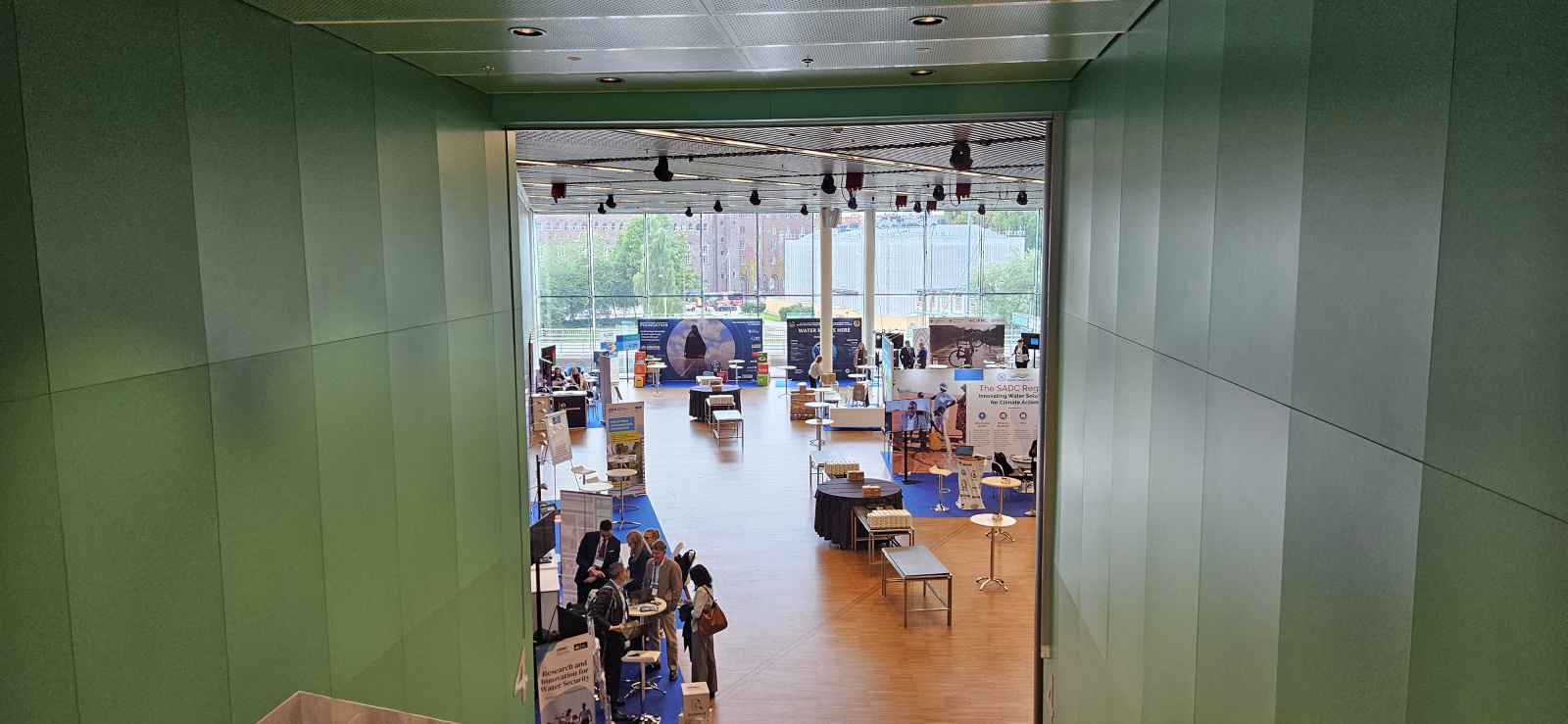
Entrance to a poster session
On top of the exciting events, the students were able to talk to and learn from leaders in their fields. Noting a particularly interesting conversation, Tyler said, “On my way back from a morning swim [Organized by Swimmable Cities for World Lakes Day], I spoke with a woman named Edit who works in Sweden as a consultant for development, climate, and peace...We talked about the ways in which it feels as though the conference has not addressed power dynamics of various countries, and how there are seldom conversations about how water can serve as a tool for peace.”
The grantees were also given a tour of Xylem Inc., a water research company, J-WAFS Research Affiliate, and sponsor of the J-WAFS Travel Grants. During the tour the students talked to engineers and saw demonstrations of Xylem's work. They were able to personally see the design principles and behind-the-scenes of Xylem’s water pumps. Employees ran clog tests and showed the students different models of their technology. Most importantly, Xylem highlighted both the economic as well as social value of their work. “I saw how companies like Xylem think beyond pumps and sensors, they want to shape the bigger infrastructure conversations. That perspective is shaping how I think about opportunities in this field,” Patrick says. The students learned that water circulation and water purification technology not only has the potential to reshape the water sector but has real life implications for communities who don’t have access to clean drinking water.
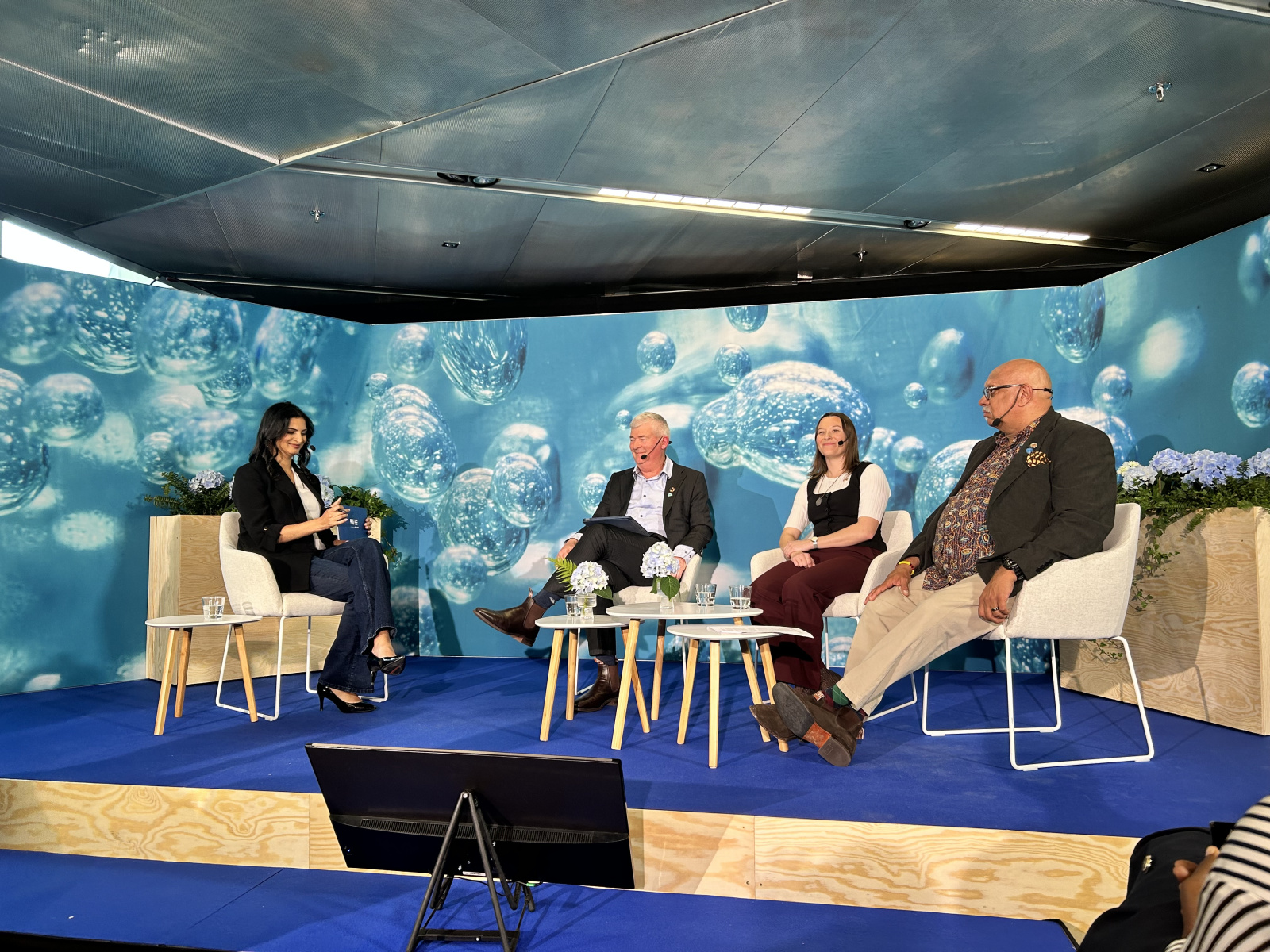
Group panel from World Water Week
Now back at MIT, the three students are able to apply what they learned to their own work. Through different lectures, seminars, discussions, and workshops, the travel grantees engaged in shaping the future of water research and climate change solutions. As a final reflection, Chotiwat notes, “While water is essential for human survival, it is equally critical as a foundation for economic growth and social development. The success of many projects depends on integrating water security into planning.” He went on to say, “Water development can no longer be viewed solely as a health issue. It is also about dignity.” The students were also grateful to Xylem, GoAigua, and J-WAFS for sponsoring the travel to this conference. Grace noted the sponsors, saying, “I appreciate their commitment to providing water solutions and investment in youth.”
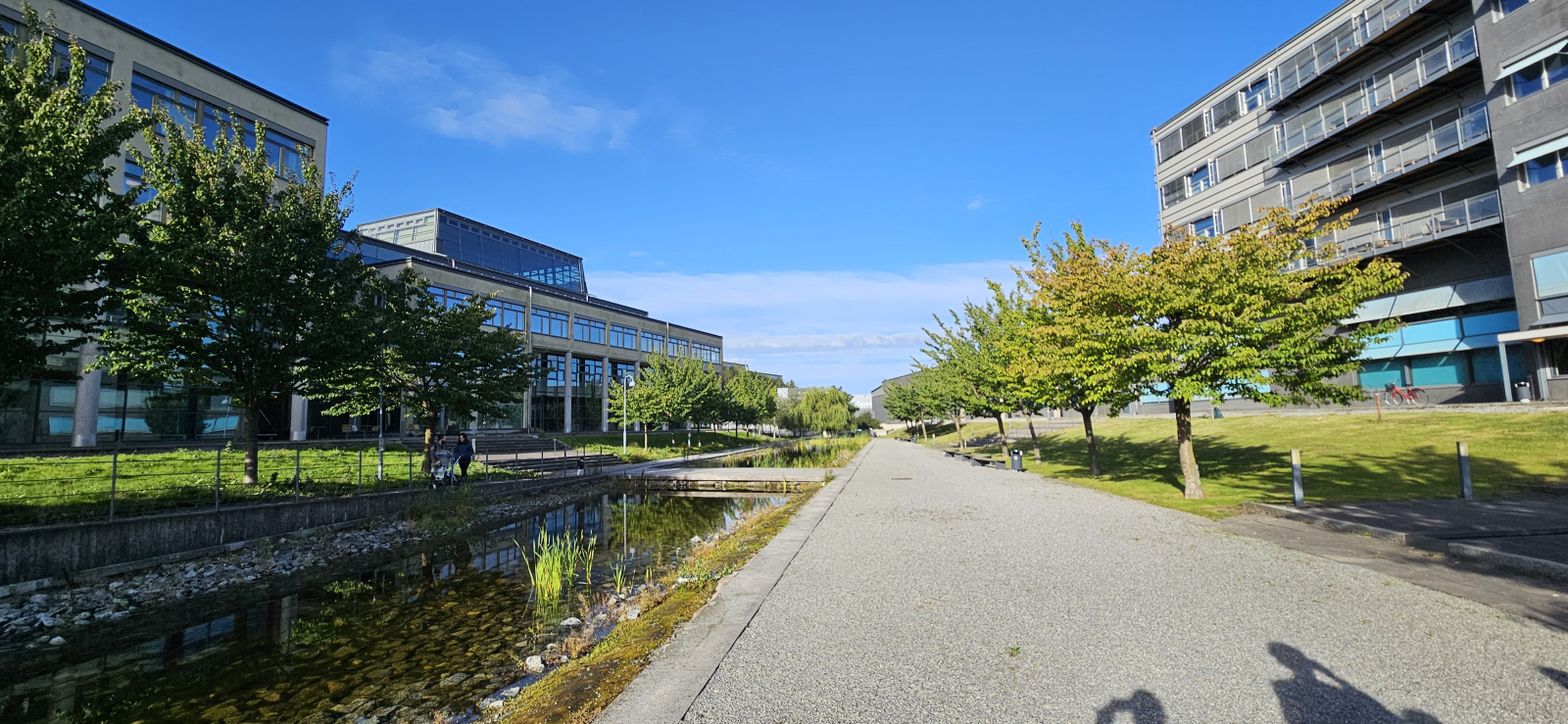
A view of Stockholm
